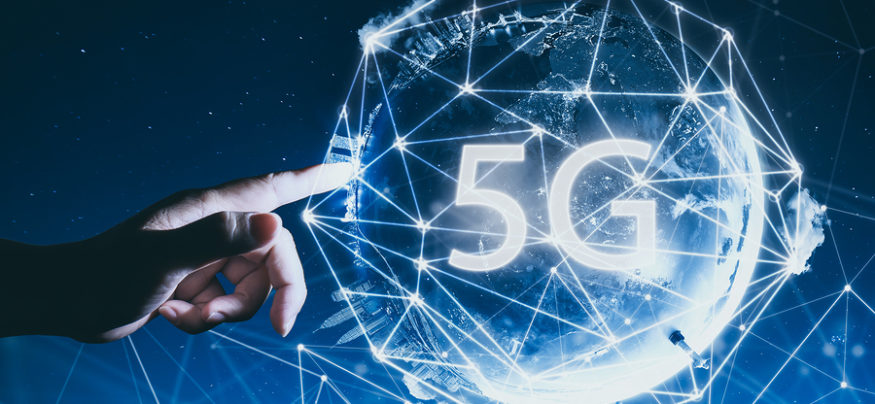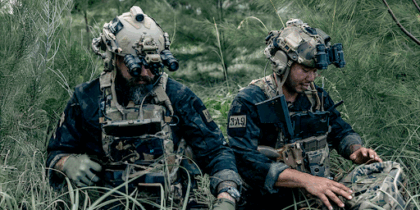The merging of smartphones and tablets with technologies like cloud, artificial intelligence (AI), Internet of Things (IoT) and virtual reality has already ignited a mobility revolution in government. Not only are these technologies pushing forward broad-reaching modernization efforts, but they are changing government operations at its core.
Forward-looking agencies are now rethinking productivity and security by adopting more mobile-first strategies where personnel are armed with more powerful tools and applications that help them get work done faster and more effectively at the mission edge. Now, mobile maturity is poised for the next leap forward, fueled by 5G-enabled broadband wireless networks. As our president and CEO, Tim Baxter, recently shared at the CTIA Race to 5G Summit, “We are moving away from an era of disparate device use, towards an era in which people’s relationships with technology are seamless and constant.” Thanks to “blazing speed, minimal latency and massive connectivity, 5G can transform the way we live, work and get around,” Baxter added.
For government agencies, 5G is the engine driving a connected world by powering new and exciting AI, IoT and cloud-based solutions that will transform mission outcomes from military operations to citizen engagement.
Maturity on the March
The 5G era is coming in the wake of two other trends that are upending government mobility — the consumerization of IT and the emergence of IoT.
Today’s government workers increasingly insist on using the same mobile devices in their jobs that they rely on for communicating and staying informed in their personal lives. Making this desire a viable opportunity for agencies where cybersecurity is paramount is modern data protection technology, exemplified by Samsung Knox, which provides defense-grade security with biometric, containerization and other capabilities to protect sensitive agency data as people work and collaborate on the move.
Sophisticated devices and heightened security, in turn, enable agency managers to develop more mature mobile strategies that go beyond traditional calendars and email applications to programs that improve productivity at the mission edge. For example, the U.S. Census Bureau plans to deploy about 500,000 handhelds to help 2020 census-takers collect data and verify addresses in the field.
Even larger gains in productivity and citizen engagement came on the horizon with the arrival of IoT. The emergence of IoT didn’t just mean a proliferation of endpoints — it meant an unprecedented explosion in data volumes and the need for more powerful data analytics. The need for faster government wireless networks has never been greater as IoT adoption matures and more data need to be analyzed and integrated into government operations.
Digitize Your Government Agency
Get this guide to drive collaboration, boost productivity and ensure security in the public sector. Download Now
5G is poised to be a game-changer for government’s next era of mobile maturity. Bryan Schromsky, Verizon’s managing partner for connected solutions, says that’s because 5G can essentially eliminate today’s bandwidth and latency limitations. To put this into perspective, he points out that while it used to take more than a day to download a full-length Hollywood movie at 4K resolution on a 3G network, 5G could take that down to 3.5 seconds.
But the benefits of 5G go far beyond just speed itself — it opens up a new world of possibilities. Here are three quick examples of how 5G could transform federal agency operations, productivity and mission effectiveness.
Smart Base Operations
Much like we see around smart cities, 5G’s ability to efficiently collect and distribute data from growing numbers of sensors enables federal IT managers to similarly make more real-time decisions for the base. 5G can power a wide range of solutions for installations — ranging from connected military vehicle tracking and maintenance to pollution monitoring, asset tracking, healthcare delivery and more.
Immersive Training for DoD and Federal Law Enforcement
5G-powered VR and AR training will allow DoD and federal law enforcement personnel to virtually experience what it’s like to encounter active shooters or other life-or-death situations. The aim: by adding lifelike details, the training can help officers achieve the best outcomes in the difficult circumstances that DoD, FBI, DEA, ATF and other personnel may face in the line of duty.
Similarly, the military is exploring how 5G’s faster speeds make it practical to merge virtual reality, augmented reality, large volumes of data and machine intelligence for immersive tabletop exercises. For example, Booz Allen worked with Samsung to develop a wargaming application scenario that uses a Samsung HMD Odyssey headset.
Recruiting and Retaining Talent
Capitalizing on 5G can also help government demonstrate its commitment to the latest technology innovations, which will be necessary for staffing agencies with the next generation of professionals. Competition for talent is fierce, and agencies need to adopt modern technologies if they want to bring the best and brightest on board.
Experience Matters
Advancements are developing quickly. Earlier this year, Samsung’s 5G millimeter-wave products became the world’s first to secure government regulatory approval, a milestone accomplished through the company’s close work with the U.S. Federal Communications Commission.
As agency leaders develop 5G roadmaps, it will be essential to partner with vendors that demonstrate a proven track record in innovation, a strategic vision and a solid roadmap. Federal IT leaders need to look at key components today, with an eye toward tomorrow — including the network connectivity and device ecosystem, integration across systems and overall security.
Discover how Samsung’s government technology solutions can assist agencies with their digital transformation.








